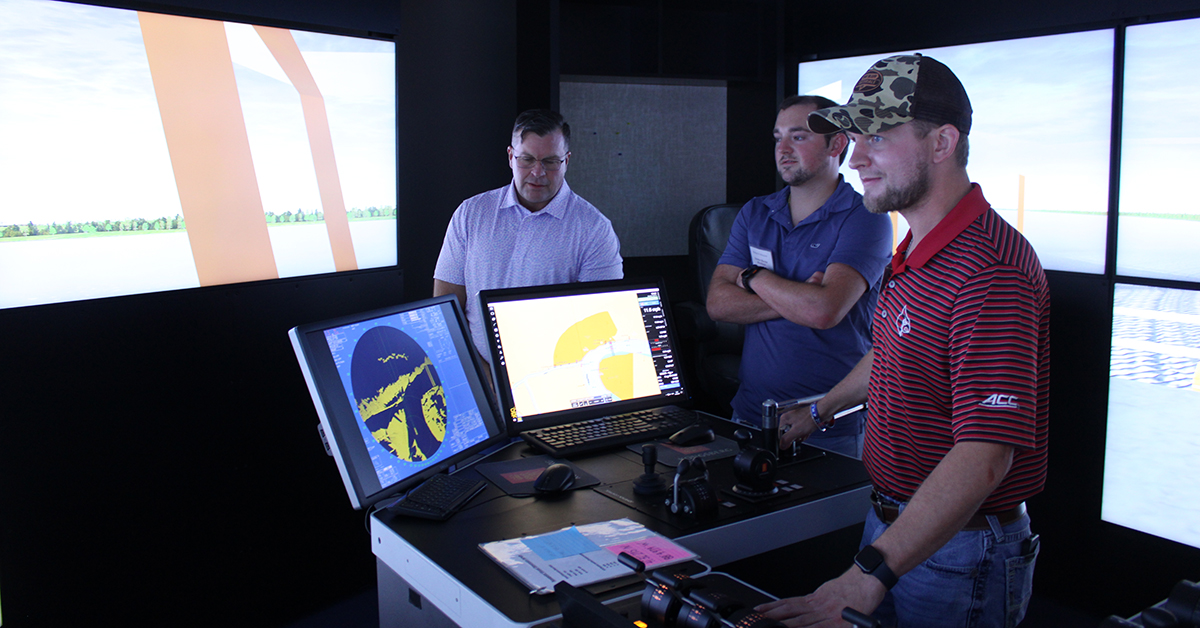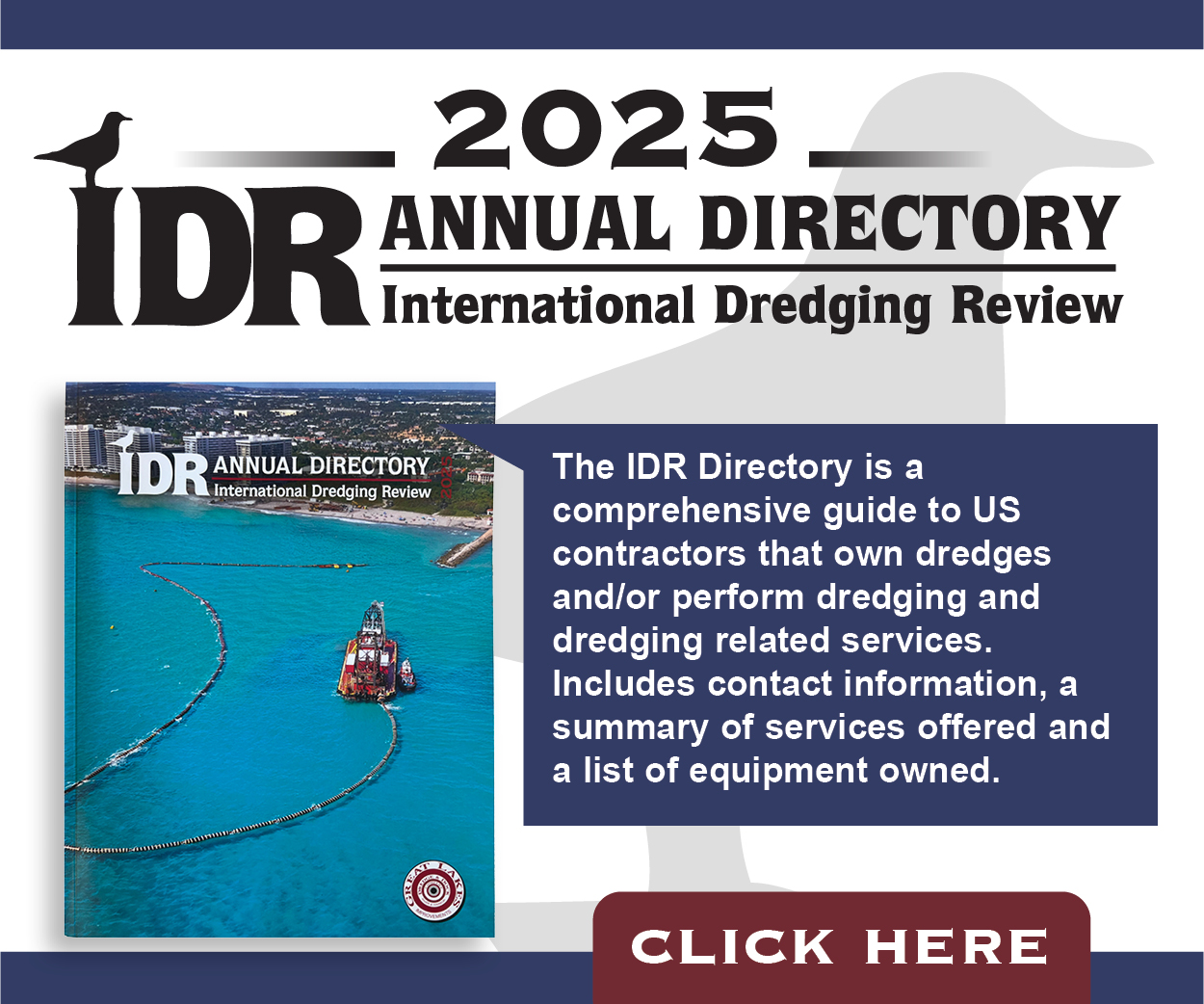Roughly 15 people, including those representing several Congressional offices, learned about the barge and towboat industry August 14 during a special “Waterways 101” session sponsored by Ingram Barge Company with assistance from Waterways Council Inc. (WCI).
Field representatives for U.S. Rep. David Kustoff and Sens. Marsha Blackburn and Bill Hagerty, all of whom serve Tennessee, climbed aboard a towboat, visited the Kentucky Lock Addition Project and even piloted a simulated towboat at the Seamen’s Church Institute’s Center for Maritime Education in Paducah, Ky.
Paducah Mayor George Bray welcomed the participants.
“From the Paducah standpoint, I can tell you we understand and value this industry,” he said.
Angela Grett, vice president of corporate affairs for Ingram Marine Group, hosted a short educational session, beginning from the question, “What is a towboat?” She described the function of locking, linehaul, harbor and canal boats and discussed related facts and figures.
Those included that a tow on the Lower Mississippi River can be 1,560 feet long, stretching longer than the height Empire State Building in New York (1,250 feet) and the Willis Tower (formerly Sears Tower) in Chicago (1,450 feet).
Grett also explained that a 15-barge tow can move as much as 216 rail cars plus six locomotives or 1,050 trucks, without adding congestion or wear and tear to roadways. At the same time, most of the locks in operation in the United States today are not large enough to handle one standard-sized tow, so operators must lock through multiple cuts. This can add hours to the process of locking through a tow on the system, costing time and money.
Deb Calhoun, senior vice president of WCI, described the need for rehabilitation, construction and maintenance on the river system’s locks and dams, explaining that the oldest locks were built in the 1930s and were meant to have a 50-year design life.
“More than 80 percent of the locks on the inland waterways system have far exceeded their 50-year design life,” she said.
Just like other U.S. infrastructure, Calhoun said, locks require recapitalization and funding.
“They’re certainly showing their age and require additional capacity,” she said.
Several company representatives spoke briefly.
Justin Dickens, vice president of administration at Crounse Corporation, said locks and dam funding should matter to all states, not only those touching the river. They are necessary to move crops from across the country’s heartland, to move aggregates and concrete to build cities, and to transport gasoline and other petroleum products necessary to maintaining the economy.
“New construction needs to be done,” he said. “It needs to be done a lot quicker and more efficiently, but it’s also the [continued funding for] locks in operation right now.”
Darin Adrian, president of the river division at Marquette Transportation Company, mentioned the need for help maintaining the river through dredging, placing buoys and addressing navigation challenges, such as an area of the Mississippi River near Hickman, Ky., where bedrock routinely causes issues during low water.
“We’re all running on the same highway,” he said. “When we get a chokepoint, it stops us all.”
While virtual aids to navigation can be useful, he said, “We need buoys out there, the steel buoys so that these guys can see where to navigate.”
The new waterways commerce cutters, which will be used to place buoys, “can’t come soon enough,” Adrian said.
Ben White, associate general counsel for American Commercial Barge Line, gave examples of some of the common products transported by barge, from all the road salt used in Cincinnati in the winter to all the sugar used to make Tootsie Roll candies.
In addition to the aging locks and dams, White noted that the industry has an aging barge fleet that companies will need to renew. President Donald Trump issued a recent executive order focusing on the importance of the maritime industry, and it’s important that the inland river industry is part of that, he said.
“We just want to make sure that the inland industry is included in the discussion,” White said.
The president has also advocated for “America-first” policies, he added.
“There’s nothing more America-first or pro-America than the Jones Act,” White said, referring to the U.S. requirement that vessels traveling the nation’s waterways must be American built, American owned and American crewed.
These jobs are also important for American employment, he said, noting that about 158,000 jobs in the river industry are held by Tennesseans and about 100,000 by Kentuckians.
Jerry Torok, vice president of safety and compliance for Reliant Maritime Solutions, asked the staffers not to forget funding the Coast Guard in the budget process. The Coast Guard needs adequate staffing in order for the maritime industry to successfully complete drydock inspections and internal structural exams required under Subchapter M, he said.
Andrew Gates, senior port captain at Hines Furlong Line, noted that Hines Furlong barges move just over 50 percent of the liquids necessary for manufacturing and industry in the area around Nashville, Tenn.
Nashville gas stations only have enough gasoline on hand to operate for five days without fuel supplies that come into the city by barge, he said.
It takes everyone working together to advocate for the system, Gates said.
“Even though we’re a towing company, we thrive on ships,” Gates said. “That’s partnerships, relationships and friendships.”
Featured image caption: Caleb Haslett, a field representative for Sen. Marsha Blackburn, carefully pilots a simulated towboat at the Seamen’s Church Institute’s Center for Maritime Education August 14 as Michael Morelock, another field representative from Blackburn’s office, and instructor Stephen Douglas look on. (Photo by Shelley Byrne)



